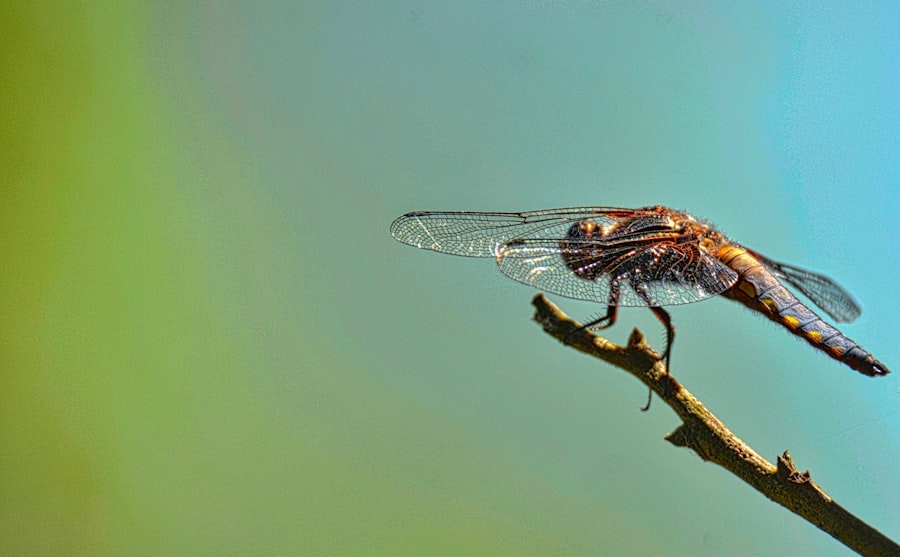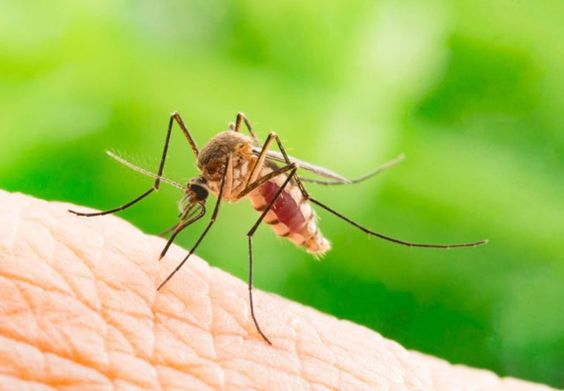
Mosquitoes are not only annoying pests, but they can also pose serious health risks. Mosquito-borne diseases such as malaria, dengue fever, and Zika virus can have devastating effects on individuals and communities. That’s why mosquito control is crucial in order to protect ourselves and our loved ones. One effective tool in the fight against mosquitoes is the mosquito trap. These traps are designed to attract and capture mosquitoes, reducing their populations and minimizing the risk of disease transmission.
Understanding the Importance of Mosquito Traps
Mosquito control is important for several reasons. First and foremost, mosquitoes are vectors for various diseases that can be harmful to humans and animals. Malaria alone causes hundreds of thousands of deaths each year, mostly in developing countries. By reducing mosquito populations, we can significantly decrease the transmission of these diseases.
Mosquito traps play a vital role in mosquito control efforts. These traps are designed to attract mosquitoes using a combination of visual cues, heat, carbon dioxide, and other attractants. Once the mosquitoes are lured into the trap, they are either trapped or killed, depending on the type of trap. By using mosquito traps, we can target specific areas where mosquitoes are most active and reduce their populations without relying solely on chemical insecticides.
Types of Mosquito Traps and How They Work
There are several types of mosquito traps available on the market today. Each type works in a slightly different way to attract and capture mosquitoes.
One common type of mosquito trap is the CO2-based trap. These traps use a combination of heat and carbon dioxide to mimic human breath, which attracts mosquitoes. Once the mosquitoes are lured into the trap, they are either trapped in a net or killed by an electric grid.
Another type of mosquito trap is the UV light trap. These traps use ultraviolet light to attract mosquitoes, as they are attracted to certain wavelengths of light. Once the mosquitoes are drawn to the light, they are either trapped in a container or killed by an electric grid.
There are also mosquito traps that use a combination of attractants, such as heat, carbon dioxide, and various scents, to lure mosquitoes. These traps may use a fan to suck the mosquitoes into a container or a sticky surface to trap them.
Factors to Consider When Choosing a Mosquito Trap
When choosing a mosquito trap, there are several factors to consider. First and foremost, you should consider the size of the area you want to protect. Some traps are designed for small outdoor spaces, while others are better suited for larger areas. It’s important to choose a trap that can effectively cover the area you need.
You should also consider the type of mosquitoes you are dealing with. Different species of mosquitoes are attracted to different cues, so it’s important to choose a trap that targets the specific species you want to control. Some traps come with different attractants that can be switched out depending on the species you are targeting.
Another factor to consider is the maintenance required for the trap. Some traps require regular cleaning and maintenance to keep them working effectively, while others are more low-maintenance. It’s important to choose a trap that fits your lifestyle and maintenance capabilities.
Indoor vs Outdoor Mosquito Traps: What’s the Difference?
There are both indoor and outdoor mosquito traps available on the market. The main difference between these two types of traps is their design and functionality.
Indoor mosquito traps are typically smaller and more discreet than outdoor traps. They are designed to be placed indoors, such as in bedrooms or living rooms, where mosquitoes may be present. These traps often use UV light or other attractants to lure mosquitoes and then trap them in a container or kill them with an electric grid.
Outdoor mosquito traps, on the other hand, are designed to cover larger areas and target mosquitoes in outdoor spaces. These traps are often larger and more powerful than indoor traps. They may use a combination of attractants, such as heat, carbon dioxide, and scents, to lure mosquitoes. Some outdoor traps can cover areas up to an acre or more, making them ideal for large yards or outdoor events.
Mosquito Trap Maintenance: Tips and Tricks

Proper maintenance is essential to keep your mosquito trap working effectively. Here are some tips and tricks to help you maintain your trap:
– Clean the trap regularly: Depending on the type of trap, you may need to clean it out regularly to remove dead mosquitoes and other debris. This will help ensure that the trap continues to attract mosquitoes effectively.
– Replace attractants as needed: Some traps use attractants that need to be replaced periodically. Be sure to follow the manufacturer’s instructions on when and how to replace these attractants.
– Check for clogs or blockages: If your trap is not working as effectively as it should, check for any clogs or blockages that may be preventing mosquitoes from entering the trap. Clearing these blockages can help improve the trap’s performance.
– Place the trap in the right location: The location of your trap can greatly impact its effectiveness. Be sure to place it in an area where mosquitoes are likely to be present, such as near standing water or in shady areas.
Budget-Friendly Mosquito Traps That Get the Job Done
Mosquito traps can vary greatly in price, but there are budget-friendly options available that still get the job done. These traps may not have all the bells and whistles of more expensive models, but they can still effectively reduce mosquito populations.
One budget-friendly option is a DIY mosquito trap. These traps can be made using simple household items such as plastic bottles, sugar water, and yeast. While they may not be as effective as commercial traps, they can still help reduce mosquito populations in small areas.
Another budget-friendly option is a basic UV light trap. These traps use ultraviolet light to attract mosquitoes, and they can be quite effective at capturing and killing mosquitoes. While they may not have all the advanced features of more expensive traps, they can still provide effective mosquito control.
Mosquito Traps for Large Outdoor Spaces
If you have a large outdoor space that you want to protect from mosquitoes, there are traps available that are specifically designed for this purpose. These traps are typically larger and more powerful than indoor traps, allowing them to cover larger areas.
One type of trap that is commonly used for large outdoor spaces is the propane-powered trap. These traps use propane to generate heat and carbon dioxide, which attract mosquitoes. Once the mosquitoes are lured into the trap, they are either trapped in a net or killed by an electric grid. Propane-powered traps can cover areas up to an acre or more, making them ideal for large yards or outdoor events.
Another option for large outdoor spaces is a fan-based trap. These traps use a powerful fan to create a suction force that draws mosquitoes into the trap. Once inside, the mosquitoes are either trapped in a container or killed by an electric grid. Fan-based traps can cover areas up to half an acre or more, depending on the model.
Mosquito Traps for Small Outdoor Spaces
If you have a small outdoor space that you want to protect from mosquitoes, there are traps available that are specifically designed for this purpose. These traps are typically smaller and more compact than those designed for larger areas.
One type of trap that is commonly used for small outdoor spaces is the electric grid trap. These traps use ultraviolet light to attract mosquitoes, and once the mosquitoes come into contact with the electric grid, they are killed instantly. Electric grid traps are compact and easy to use, making them ideal for small patios or balconies.
Another option for small outdoor spaces is a sticky trap. These traps use a sticky surface to capture mosquitoes, preventing them from flying away. Sticky traps are often discreet and can be placed in inconspicuous areas, making them ideal for small gardens or outdoor seating areas.
Mosquito Traps for Travel and Camping
If you are planning to travel or go camping in an area with a high mosquito population, there are traps available that are specifically designed for this purpose. These traps are typically portable and easy to use, making them ideal for on-the-go mosquito control.
One type of trap that is commonly used for travel and camping is the battery-powered trap. These traps use a combination of attractants, such as heat and carbon dioxide, to lure mosquitoes. Once the mosquitoes are lured into the trap, they are either trapped in a container or killed by an electric grid. Battery-powered traps are compact and lightweight, making them easy to pack and carry with you.
Another option for travel and camping is a wearable trap. These traps are designed to be worn on the body, such as on a belt or around the wrist. They emit attractants that mimic human breath, attracting mosquitoes away from the wearer. Wearable traps are compact and discreet, making them ideal for outdoor activities where mosquito protection is needed.
Mosquito Traps vs Other Mosquito Control Methods: Pros and Cons
While mosquito traps are an effective tool in the fight against mosquitoes, they are not the only option available. There are several other mosquito control methods that can be used in conjunction with or instead of mosquito traps. Here are some pros and cons of each method:
– Insecticides: Insecticides can be effective at killing mosquitoes, but they can also have negative impacts on the environment and human health. They may also only provide temporary relief, as new mosquitoes can quickly replace those that have been killed.
– Mosquito repellents: Mosquito repellents can provide temporary relief from mosquito bites, but they do not reduce mosquito populations. They may also contain chemicals that can be harmful to humans and the environment.
– Source reduction: Source reduction involves eliminating or treating mosquito breeding sites, such as standing water. This can be an effective way to reduce mosquito populations, but it requires ongoing effort and vigilance.
– Biological control: Biological control involves using natural predators or parasites to control mosquito populations. This can be an effective and environmentally friendly method, but it may not be practical in all situations.
Mosquito control is crucial in order to protect ourselves and our loved ones from mosquito-borne diseases. Mosquito traps are an effective tool in this fight, as they can help reduce mosquito populations and minimize the risk of disease transmission. When choosing a mosquito trap, it’s important to consider factors such as the size of the area you want to protect, the type of mosquitoes you are dealing with, and the maintenance required for the trap. Whether you have a large outdoor space, a small patio, or are planning to travel or go camping, there is a mosquito trap available that can meet your needs. By using mosquito traps in conjunction with other mosquito control methods, we can create a safer and more enjoyable environment for ourselves and future generations.



